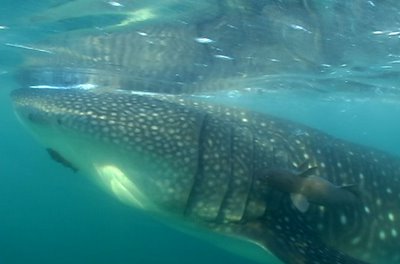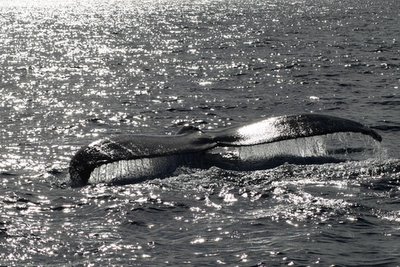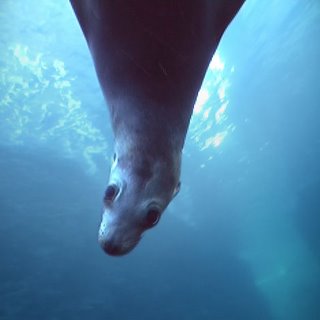
-
WHALE SHARK
Rhincodon typus
-
GENERAL DESCRIPTION
The whale shark is a the biggest shark and the biggest fish. It is NOT a whale. It has a huge mouth which can be up to 4 feet (1.4 m) wide. Its mouth is at the very front of its head (not on the underside of the head like in most sharks). It has a wide, flat head, a rounded snout, small eyes, 5 very large gill slits, 2 dorsal fins (on its back) and 2 pectoral fins (on its sides). The spiracle (a vestigial first gill slit used for breathing when the shark is resting on the sea floor) is located just behind the shark's eye. Its tail has a top fin much larger than the lower fin.
The whale shark has distinctive light-yellow markings (random stripes and dots) on its very thick dark gray skin. Its skin is up to 4 inches (10 cm) thick. There are three prominent ridges running along each side of the shark's body.
This enormous shark is a filter feeder and sieves enormous amounts of plankton to eat through its gills as it swims.
SIZE
The whale shark is up to 46 feet (14 m), weighing up to 15 tons. The average size is 25 feet (7.6 m) long It is the largest fish in the world. Females are larger than males (like most sharks).
TEETH
Whale sharks have about 3,000 very tiny teeth but they are of little use. Whale sharks are filter feeders who sieve their tiny food through their large gills.
DIET AND FEEDING HABITS
The whale shark is a filter feeder that sieves small animals from the water. As it swims with its mouth open, it sucks masses of water filled with prey into its mouth and through spongy tissue between its 5 large gill arches. After closing its mouth, the shark uses gills rakers that filter the nourishment from the water. Anything that doesn't pass through the gills is eaten. Gill rakers are bristly structures (the thousands of bristles are about 4 inches or 10 cm long) in the shark's mouth that trap the small organisms which the shark then swallows. The water is expelled through the sharks 5 pairs of gill slits. The prey includes plankton, krill, small fish, and squid. The shark can process over 1500 gallons (6000 liters) of water each hour.
SOCIAL GROUPS
Whale sharks are solitary creatures. Groups of whale sharks have only rarely been seen.
HABITAT
Whale sharks live in warm water (near the equator) both along the coast and in the open seas. They spend most of their time near the surface.
DISTRIBUTION
Whale sharks are found worldwide in the warm oceans from the equator to about ±30-40° latitude. They are not, however, found in the Mediterranean Sea.
SWIMMING
Whale sharks are slow swimmers, going no more than 3 mph (5 kph). They swim by moving their entire bodies from side to side (not just their tails, like some other sharks do).
REPRODUCTION
The Whale shark was long thought to be oviparous (an egg 14 inches (36 cm) long was found in the Gulf of Mexico in 1953; this would be the largest egg in the world). Recently, pregnant females have been found containing hundreds of pups, so, Whale sharks are viviparous, giving birth to live young. Newborns are over 2 feet (60 cm) long.
Whale sharks are sexually mature at 30 years old. This is the age at which they are able to mate and reproduce.
WHALE SHARK ATTACKS
Whale sharks are harmless to people and usually indifferent to divers.
LIFE SPAN
It has been estimated that whale sharks may live up to 100 - 150 years.
Photography: Islotes / La Paz / Carlos Aboyo










